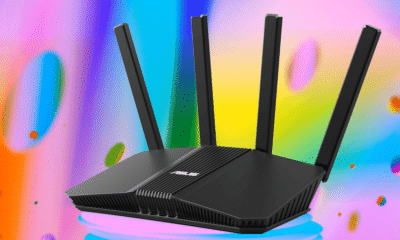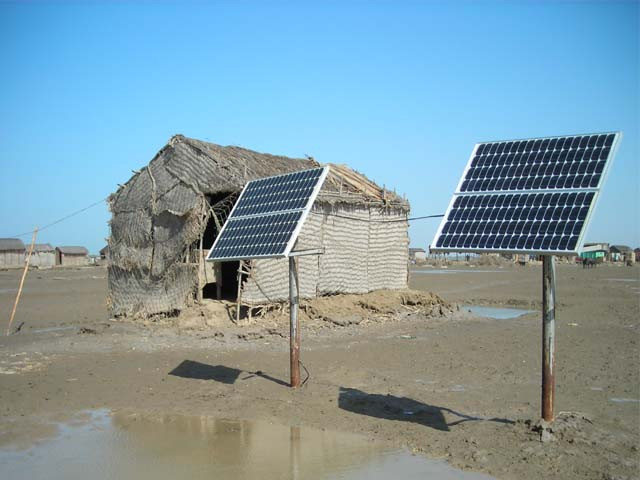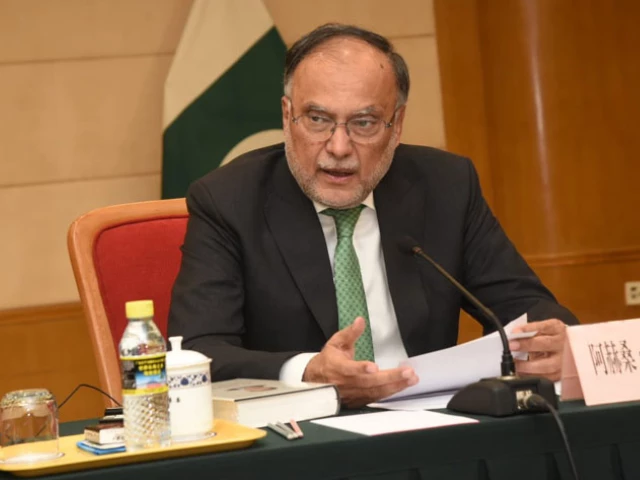Business
Kodak faces financial struggles even as Gen Z sparks a film resurgence

Rolls of Kodak Gold film hang on a shelf at the Precision Camera & Video store on August 12, 2025 in Austin, Texas.
Brandon Bell | Getty Images
Clair Sapilewski has dozens of rolls of camera film ready to use in her cupboard at all times.
A photography major at American University, the 21-year-old said she always keeps her film stocked to achieve that aesthetic that only film cameras can capture.
“It teaches you how to slow down, how to look at things more carefully and how to choose your shots more wisely,” she said.
It’s part of an ongoing trend as members of Generation Z have taken an interest in film cameras. Sapilewski said while her professors taught her the basics, she and her friends have used their film cameras to develop photos that their iPhones can’t quite replicate.
And in her college circle, the most popular brand for camera film is Eastman Kodak, a company she calls a “household name.”
“Pretty much everybody uses Kodak films — the average film user, when they reach for film, is going to reach for Kodak,” Sapilewski said.
But on the other side of the lens, Kodak may be singing a different tune.
The 133-year-old photography company indicated in its second-quarter earnings report on Monday that its finances “raise substantial doubt” in its ability to continue operations as a going concern.
The company reported a net loss of $26 million, down 200% from net income of $26 million for the second quarter of 2024. Kodak also posted a 12% decrease in gross profit with millions in debt obligations.
“Kodak has debt coming due within 12 months and does not have committed financing or available liquidity to meet such debt obligations if they were to become due in accordance with their current terms,” the company wrote in a regulatory filing.
Shares of the company are down more than 15% year to date.
Kodak plans to terminate its retirement pension plan and a company spokesperson told CNBC that Kodak aims to use money that it will receive from the settlement to pay off its debts.
“Kodak is confident it will be able to pay off a significant portion of its term loan well before it becomes due, and amend, extend or refinance our remaining debt and/or preferred stock obligations,” the spokesperson said.
This isn’t the first time the company has faced struggles.
Founded in Rochester, New York, in the late 1800s, Kodak rode the wave of photography with a goal of simplifying the process for consumers. But as the era of digital technology took over, the company faced increasing struggles with staying relevant as cameras moved beyond film and disposables.
In the 2000s, the company tried to keep up with the growing trend of digital cameras but struggled, according to Melius Research analyst Ben Reitzes, who said Kodak was ignoring concerns at the time about the evolving macroenvironment.
“Digital technology wasn’t ready right away to cut sales of film — but common sense told us differently,” Reitzes wrote in a March note. “At the time, Kodak management told us that film would co-exist with digital cameras and more photos would be taken — and more would need to be printed by Kodak.”
Instead, Kodak filed for bankruptcy in 2012. It reemerged a year later in 2013 with four main business components: print, advanced materials and chemicals, motion picture, and consumer, which includes cameras and accessories.
A ‘rebellion against digital perfection’
In recent years, however, the retro camera trend has been seeing a resurgence.
In 2020, then-General Manager Ed Hurley told NBC News that Kodak made more than twice the number of film rolls in 2019 than it made in 2015.
And on last year’s third-quarter earnings call, Kodak CEO Jim Continenza said the company was experiencing such high demand for film that it needed to upgrade its Rochester factory.
“Our film sales have increased,” Continenza said at the time. “As we continue to see our commitment and our customer commitment to film, still and motion picture, we are going to continue to invest in that space and continue with that growth.”
According to Fortune Business Insights, the global cinema camera market size is fast growing and estimated to reach $535 million by 2032. The Global Wellness Institute named “analog wellness” — including pre-digital technology — its top trend for 2025.
That growth has been driven in large part by Gen Z, which has turned to old-school aesthetics in what’s been a “divorce” from the hyperrealism of digital photography, according to Alex Cooke, the editor-in-chief of Fstoppers, a photography news site.
“I think there’s this rebellion against digital perfection where film feels real in this kind of hyper-curated Instagram and TikTok world, where images are filtered and Facetuned and algorithm-tested,” Cooke said.
For members of Gen Z, who grew up in the smartphone age, Cooke said this type of photography brings a “nostalgia without lived experience,” where younger people are romanticizing a slower culture and breaking the instant feedback loop.
The aesthetics of film are also at play, Cooke added, with the unique colors and grains capturing something a smartphone could not. Ironically, social media even feeds into amplifying the trend, he said.
Using film cameras and developing that film also plays into a Gen Z trend of digital minimalism, according to Digital Camera World U.S. Editor Hillary Grigonis.
As a professional photographer, Grigonis said she’s seen Gen Z lean into the feeling of “disconnecting” when using film, which provides a more tangible photography experience than smartphones.
“Part of the rise in film photography among Gen Z is likely from that desire to disconnect and the craving for that retro aesthetic,” Grigonis said, adding that she was surprised at Kodak’s financial struggles given the overall rise in demand.
For 25-year-old Madison Stefanis, Kodak was her entry point into the camera world. A Gen Z herself, Stefanis created 35mm Co, a film camera company specifically aimed at making the photography style easy and accessible for her generation.
Stefanis said she’s seen that younger people are leaning into the emotional connection created by the delayed gratification of waiting for photos to be developed, something that’s become “lost in the digital age.”
Because she’s seen Gen Z driving the resurgence of film, Stefanis said she was “shocked” at Kodak’s declaration about its ability to continue as a going concern.
“Gen Z are really craving something they can hold in their hands,” she said. “These days, at least for myself, most of my memories live either in my mind or in my phone, so I think having actual tangible, physical objects where we can store our keepsakes and those key moments feels really special to my generation.”
Business
Private sector data: Over 2 lakh private companies closed in 5 years; govt flags monitoring for suspicious cases – The Times of India

NEW DELHI: The government on Monday said that over the past five years, more than two lakh private companies have been closed in India.According to data provided by Minister of State for Corporate Affairs Harsh Malhotra in a written reply to the Lok Sabha, a total of 2,04,268 private companies were shut down between 2020-21 and 2024-25 due to amalgamation, conversion, dissolution or being struck off from official records under the Companies Act, 2013.Regarding the rehabilitation of employees from these closed companies, the minister said there is currently no proposal before the government, as reported by PTI. In the same period, 1,85,350 companies were officially removed from government records, including 8,648 entities struck off till July 16 this fiscal year. Companies can be removed from records if they are inactive for long periods or voluntarily after fulfilling regulatory requirements.On queries about shell companies and their potential use in money laundering, Malhotra highlighted that the term “shell company” is not defined under the Companies Act, 2013. However, he added that whenever suspicious instances are reported, they are shared with other government agencies such as the Enforcement Directorate and the Income Tax Department for monitoring.A major push to remove inactive companies took place in 2022-23, when 82,125 companies were struck off during a strike-off drive by the corporate affairs ministry.The minister also highlighted the government’s broader policy to simplify and rationalize the tax system. “It is the stated policy of the government to gradually phase out exemptions and deductions while rationalising tax rates to create a simple, transparent, and equitable tax regime,” he said. He added that several reforms have been undertaken to promote investment and ease of doing business, including substantial reductions in corporate tax rates for existing and new domestic companies.
Business
Pakistan’s Textile Exports Reach Historic High in FY2025-26 – SUCH TV

Pakistan’s textile exports surged to $6.4 billion during the first four months of the 2025-26 fiscal year, marking the highest trade volume for the sector in this period.
According to the Pakistan Bureau of Statistics (PBS), value-added textile sectors were key contributors to the growth.
Knitwear exports reached $1.9 billion, while ready-made garments contributed $1.4 billion.
Significant increases were observed across several commodities: cotton yarn exports rose 7.74% to $238.9 million, and raw cotton exports jumped 100%, reaching $2.6 million from zero exports the previous year.
Other notable gains included tents, canvas, and tarpaulins, up 32.34% to $53.48 million, while ready-made garments increased 5.11% to $1.43 billion.
Exports of made-up textile articles, excluding towels and bedwear, rose 4.17%, totaling $274.75 million.
The report also mentioned that the growth in textile exports is a result of improved global demand and stability in the value of the Pakistani rupee.
Business
Peel Hunt cheers ‘positive steps’ in Budget to boost London market and investing

UK investment bank Peel Hunt has given some support to under-pressure Chancellor Rachel Reeves over last week’s Budget as it said efforts to boost the London market and invest in UK companies were “positive steps”.
Peel Hunt welcomed moves announced in the Budget, such as the stamp duty exemption for shares bought in newly listed firms on the London market and changes to Isa investing.
It comes as Ms Reeves has been forced to defend herself against claims she misled voters by talking up the scale of the fiscal challenge in the run-up to last week’s Budget, in which she announced £26 billion worth of tax rises.
Peel Hunt said: “Following a prolonged period of pre-Budget speculation, businesses and investors now have greater clarity from which they can start to plan.
“The key measures were generally well received by markets, particularly the creation of additional headroom against the Chancellor’s fiscal rules.
“Initiatives such as a stamp duty holiday on initial public offerings (IPOs) and adjustments to the Isa framework are intended to support UK capital markets and encourage investment in British companies.
“These developments, alongside the Entrepreneurship in the UK paper published simultaneously, represent positive steps toward enhancing the UK’s attractiveness for growth businesses and long-term investors.”
Ms Reeves last week announced a three-year stamp duty holiday on shares bought in new UK flotations as part of a raft of measures to boost investment in UK shares.
She also unveiled a change to the individual savings account (Isa) limit that lowers the cash element to £12,000 with the remaining £8,000 now redirected into stocks and shares.
But the Chancellor also revealed an unexpected increase in dividend tax, rising by 2% for basic and higher rate taxpayers next year, which experts have warned “undermines the drive to increase investing in Britain”.
Peel Hunt said the London IPO market had begun to revive in the autumn, although listings activity remained low during its first half to the end of September.
Firms that have listed in London over recent months include The Beauty Tech Group, small business lender Shawbrook and tinned tuna firm Princes.
Peel Hunt added that deal activity had “continued at pace” throughout its first half, with 60 transactions announced across the market during that time and 10 active bids for FTSE 350 companies, as at the end of September.
Half-year results for Peel Hunt showed pre-tax profits jumped to £11.5 million in the six months to September 30, up from £1.2 million a year earlier, as revenues lifted 38.3%.
Peel Hunt said its workforce has been cut by nearly 10% since the end of March under an ongoing savings drive, with full-year underlying fixed costs down by around £5 million.
Steven Fine, chief executive of Peel Hunt, said: “The second half has started strongly, with the group continuing to play leading roles across both mergers and acquisitions and equity capital markets mandates.”
-

 Sports1 week ago
Sports1 week agoWATCH: Ronaldo scores spectacular bicycle kick
-

 Entertainment1 week ago
Entertainment1 week agoWelcome to Derry’ episode 5 delivers shocking twist
-

 Politics1 week ago
Politics1 week agoWashington and Kyiv Stress Any Peace Deal Must Fully Respect Ukraine’s Sovereignty
-

 Business1 week ago
Business1 week agoKey economic data and trends that will shape Rachel Reeves’ Budget
-

 Politics1 week ago
Politics1 week ago53,000 Sikhs vote in Ottawa Khalistan Referendum amid Carney-Modi trade talks scrutiny
-

 Tech6 days ago
Tech6 days agoWake Up—the Best Black Friday Mattress Sales Are Here
-

 Fashion1 week ago
Fashion1 week agoCanada’s Lululemon unveils team Canada kit for Milano Cortina 2026
-

 Tech23 hours ago
Tech23 hours agoGet Your Steps In From Your Home Office With This Walking Pad—On Sale This Week




1729471601-0/image-(8)1729471601-0-640x480.webp)








